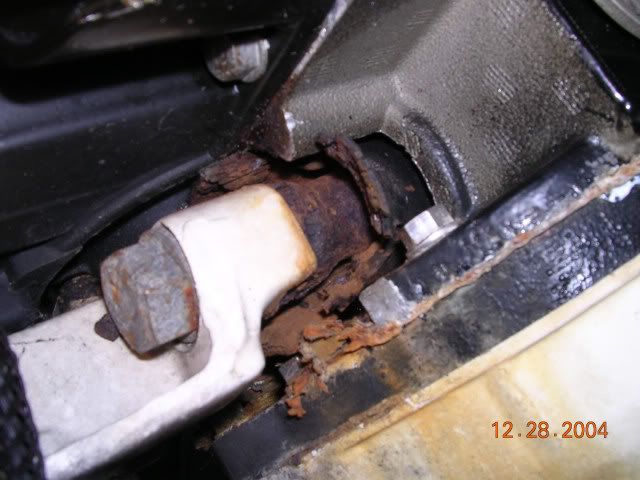jim dozier
Lieutenant Commander
- Joined
- Jan 8, 2003
- Messages
- 1,970
I recently acquired a 97-115hp Evinrude60 degree V4. The engine appears to be in good shape with good compression. I am doing some routine maintenance (water pump, etc.)on it prior to rigging it on my boat and replacing the existing engine. When I removed the lower cowling to do some minor ding repair I noticed a rust stain on the lower leg that led me to notice the engine mount that the steering arm is bolted to is badly rusted. The steering arm itself is in pristine condition. It is attached by 2 large bolts to a steel forging that is attached beneath the powerhead. The steel mount is covered in rubber and the rubber has split from the expanding rust. I'll try to post a picture if I can bring home a digital camera. When I chipped away the loose rust and scale I could see that the damage was significant on the port side and probably not significant on the starboard side. As this is how the boat is steered I am leaning towards replacement. This requires removal of the powerehead on an otherwise decent engine  <br /><br />The real reason for this long winded posting is WHY did this mount rust so bad. Nothing else on the engine is corroded. Has this been a problem on other similar engines or is this indicative of some other problem such as a leaking powerhead gasket? I guess I'll find out when I pull the powerhead but if anyone has some input on this I like to know in advance. I am currently waiting on the OMC service manual I ordered.
<br /><br />The real reason for this long winded posting is WHY did this mount rust so bad. Nothing else on the engine is corroded. Has this been a problem on other similar engines or is this indicative of some other problem such as a leaking powerhead gasket? I guess I'll find out when I pull the powerhead but if anyone has some input on this I like to know in advance. I am currently waiting on the OMC service manual I ordered.





















